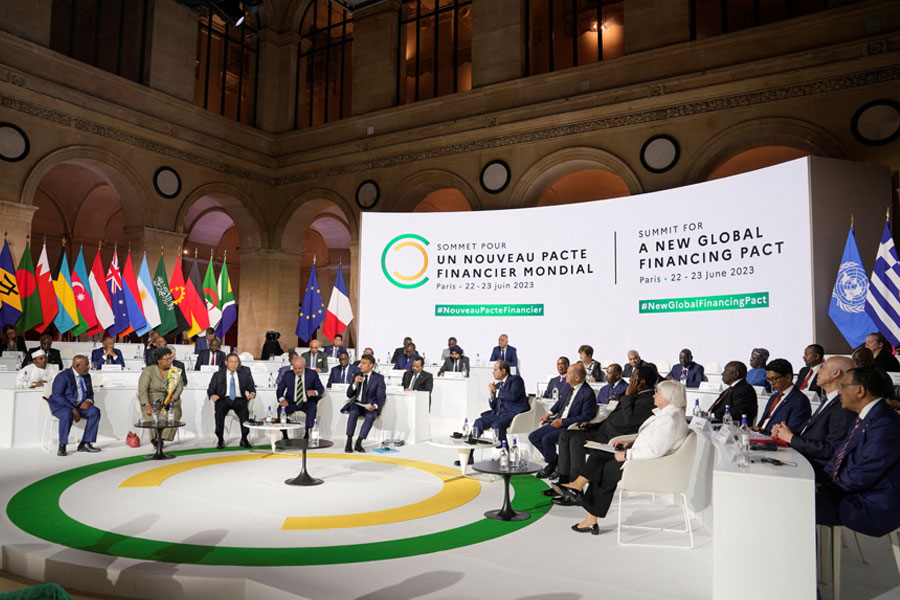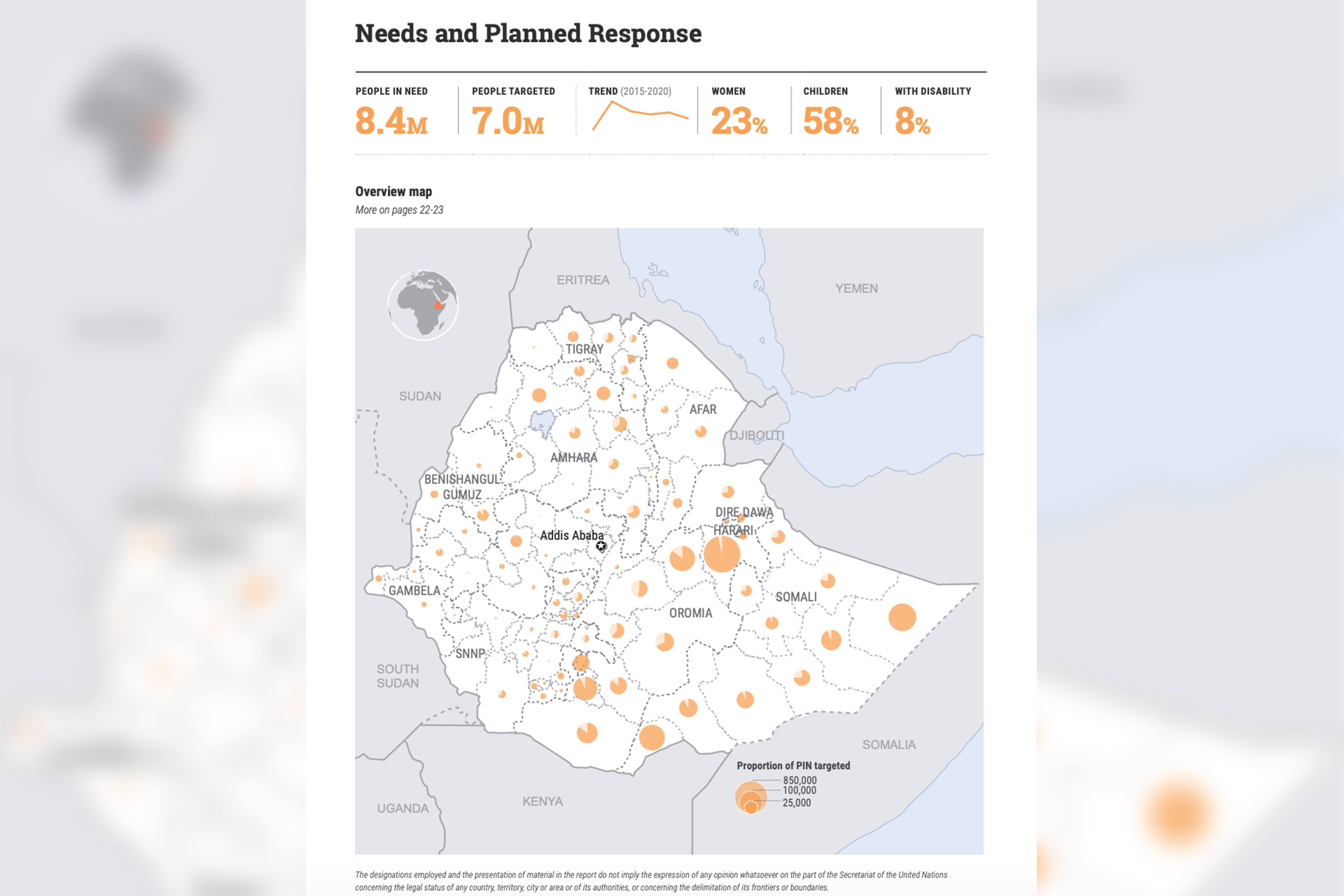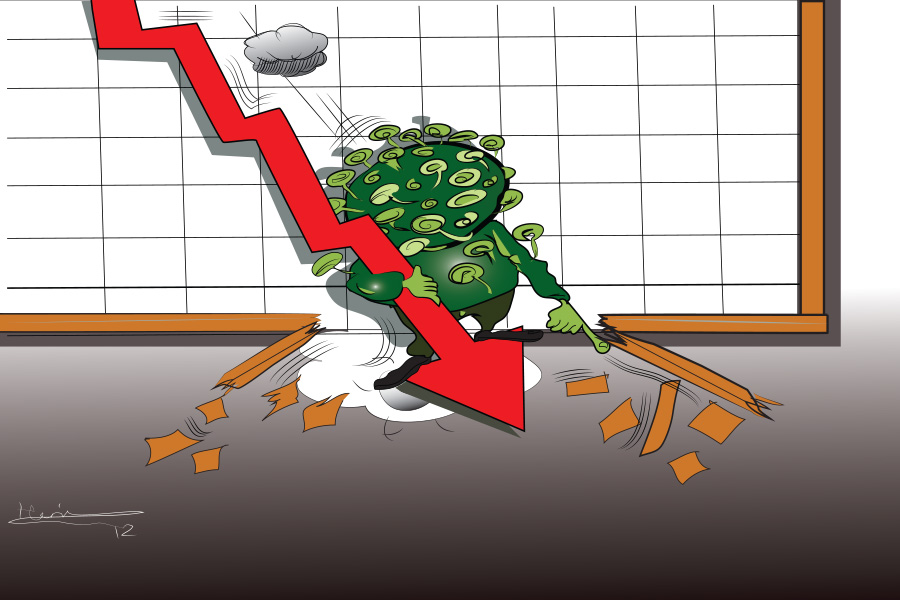
Exclusive Interviews | Jun 24,2023
Jan 7 , 2022
By Brook Kebede
The recent conflict, recurring natural disasters, chronic poverty, drought, desert locust swarms, widespread food insecurity and the COVID-19 pandemic have resulted in millions of Ethiopians needing humanitarian assistance. The recent escalation of the civil war has resulted in the loss of life, displacement, and looting of a large segment of the population.
Besides, there are too many destroyed health centres, civilian infrastructure, factories, universities, schools, government offices and irrigation systems vital to the economy. It is no surprise then that millions of people in Ethiopia are in dire need of humanitarian assistance.
Some seven million people throughout the country are suffering acute food insecurity. Still, the humanitarian situation continues to deteriorate. The complex circumstances have made humanitarian response very difficult, and the population's needs continue to increase. Above all, vulnerable sections of society, including children, persons with disabilities, women, seniors, and others, have been affected by the humanitarian crisis and will also likely continue to be impacted after the conflict ends.
There is a strong need to expand the financing pool for protracted humanitarian crises and reconstitution of basic infrastructure. Here, we have observed several efforts made by individuals, groups, NGOs and government agencies. Besides, the public is providing a helping hand through various means. But there is a lack of coordination since humanitarian actors and government are making independent decisions and choices about who, what and where to provide support.
There is also no regular forum for consultation or communication about these choices and decisions. Consequently, duplication of tasks and wastage of resources are observed. There is a strong need for coordinated effort about the division of tasks, or at the very least, and greater communication of funding intentions between them. This is because coordinated humanitarian services can bring significant benefits and will help to save more lives and restore more people’s livelihoods.
Comprehensive post-conflict reconstruction plans need to be designed to facilitate the transition to sustainable peace and to support economic and social development. Economic recovery depends on the success of this transition and on rebuilding the domestic economy and restoring access to external resources. The government should design a comprehensive reestablishment framework of governance by strengthening affected regional and local governments, restoring law and order, and enabling civil society organisations to work effectively in the affected areas.
Besides, both the federal and regional governments need to focus on revamping essential infrastructures, such as key transport, communication, and utility networks. In this respect, they should rebuild and maintain key social infrastructure, financing education and health, including recurrent costs.
There has to be a clear and smart plan to provide assistance to those affected by conflicts through the reintegration of displaced populations. In the meantime, it is vital to demobilise and reintegrate ex-combatants, including militias and irregular armed groups. Special considerations should also be given to the wounded and impacted populations. The whole time, attention should not be taken away from vulnerable groups, such as women, persons with disabilities, seniors and children. It is the long-term effects of war on these groups that will continue to burden the economy even after the conflict is officially ended.
The federal government, in consultation with regional governments, should also design a strategy that promotes investment in key productive sectors; creates conducive conditions for resumption of trade, savings, and domestic and foreign investment; and promotes macroeconomic stabilisation, rehabilitation of financial institutions, and restoration of appropriate legal and regulatory frameworks. To aid in this, the government needs to normalise financial borrowing arrangements by planning a workout of arrears, debt rescheduling, and the longer-term path to financial normalisation.
PUBLISHED ON
Jan 07,2022 [ VOL
22 , NO
1132]


Exclusive Interviews | Jun 24,2023

Radar | Apr 10,2021

Covid-19 | May 31,2020

Radar | Feb 19,2022

Radar | Nov 16,2024

Fortune News | Mar 13,2020

Radar | Jan 29,2022

Editorial | Mar 28,2020

Commentaries | Aug 17,2019

Viewpoints | Feb 26,2022

My Opinion | 131981 Views | Aug 14,2021

My Opinion | 128369 Views | Aug 21,2021

My Opinion | 126307 Views | Sep 10,2021

My Opinion | 123925 Views | Aug 07,2021

Dec 22 , 2024 . By TIZITA SHEWAFERAW
Charged with transforming colossal state-owned enterprises into modern and competitiv...

Aug 18 , 2024 . By AKSAH ITALO
Although predictable Yonas Zerihun's job in the ride-hailing service is not immune to...

Jul 28 , 2024 . By TIZITA SHEWAFERAW
Unhabitual, perhaps too many, Samuel Gebreyohannes, 38, used to occasionally enjoy a couple of beers at breakfast. However, he recently swit...

Jul 13 , 2024 . By AKSAH ITALO
Investors who rely on tractors, trucks, and field vehicles for commuting, transporting commodities, and f...

Jul 5 , 2025
Six years ago, Ethiopia was the darling of international liberal commentators. A year...

Jun 28 , 2025
Meseret Damtie, the assertive auditor general, has never been shy about naming names...

Jun 21 , 2025
A well-worn adage says, “Budget is not destiny, but it is direction.” Examining t...

Jun 14 , 2025
Yet again, the Horn of Africa is bracing for trouble. A region already frayed by wars...

Jul 6 , 2025 . By BEZAWIT HULUAGER
The federal legislature gave Prime Minister Abiy Ahmed (PhD) what he wanted: a 1.9 tr...

Jul 6 , 2025 . By YITBAREK GETACHEW
In a city rising skyward at breakneck speed, a reckoning has arrived. Authorities in...

Jul 6 , 2025 . By NAHOM AYELE
A landmark directive from the Ministry of Finance signals a paradigm shift in the cou...

Jul 6 , 2025 . By NAHOM AYELE
Awash Bank has announced plans to establish a dedicated investment banking subsidiary...